-
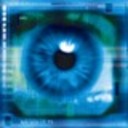 whale-av
posted in technical issues • read more
whale-av
posted in technical issues • read more@Hello_Hello Welcome to the forum..
Please upload your patch. It is not normal.... so we need to see why it might be happening.
When you start a post you will see an UP arrow above where you are typing...... click that and browse to your patch to upload it.
David. -
 whale-av
posted in technical issues • read more
whale-av
posted in technical issues • read more@Shabroy Looks like you should be getting playback.
Are the arrays filled? ....... maybe you should put a [loadbang] to the read messages to fill the arrays at startup.
Is audio turned on?
You can do this if [loadbang] works in PdParty....... like_this.pd
David. -
 whale-av
posted in technical issues • read more
whale-av
posted in technical issues • read more@Shabroy I have modified conversion from decimal in the post above, adding the triggers.
You get the error message because when [tabplay~] gets to the end of the track it is sending a bang into the right inlet of [*~ 0.7]
So just remove that cord I think.....
David
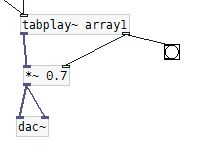
-
-
 whale-av
posted in technical issues • read more
whale-av
posted in technical issues • read more@jameslo Yes..... drunk and way past bedtime so rightly chastised.
Don't let me be misunderstood....
My intentions were good.
David -
 whale-av
posted in technical issues • read more
whale-av
posted in technical issues • read more@Shabroy https://www.calculatorsoup.com/calculators/conversions/convert-decimal-degrees-to-degrees-minutes-seconds.php
So........ (triggers included) gps_dec2deg_min_sec.pd
David.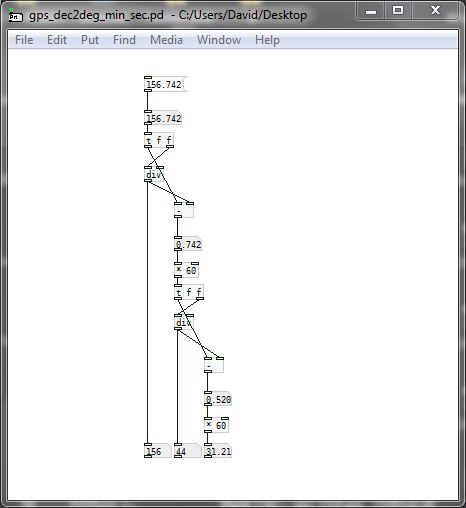
-
 whale-av
posted in technical issues • read more
whale-av
posted in technical issues • read more@Shabroy Not sure, but in the [expr] object $f1 is the left inlet... lat
and $f2 is the right inlet....... lonSo reading the values from left to right in [expr] in my example "maybe.pd"
1.12 is the minimum GPS value for latitude to trigger playback
5.12 is the maximum GPS value for latitude to trigger playback
7 is the minimum GPS value for longitude to trigger playback
14.8 is the maximum GPS value for longitude to trigger playbackHave a look at where you are and the values that [r #loc] is sending.
Both latitude and longitude have to be in range for playback to be triggered and you need to change the values to encompass (good pun) the place where you will be when it should trigger.
Hoping that helps as I have no way to test your patch even if you upload it.
Maybe someone else could help with that if you cannot get it working.Also maybe you need a path set to your sound file on the iPhone.
That is mentioned somewhere in the Doc for PdParty.
David. -
 whale-av
posted in technical issues • read more
whale-av
posted in technical issues • read more@Shabroy In PdParty_composerpack\PdParty_composerpack\lib\pd you have playback.pd which needs to be triggered for playback when your parameters from loc are in range...... and only once or playback will be triggered repeatedly by incoming data and restart the file.
So you need to send to [r #transport] the message
[playback filename.extension(
|
[s #transport]You need to control that with a patch something like..... maybe.pd
[expr if ()] is the geofence for lat and lon... outputs 1 for inside, 0 for outside.... (logical true/false)....
David.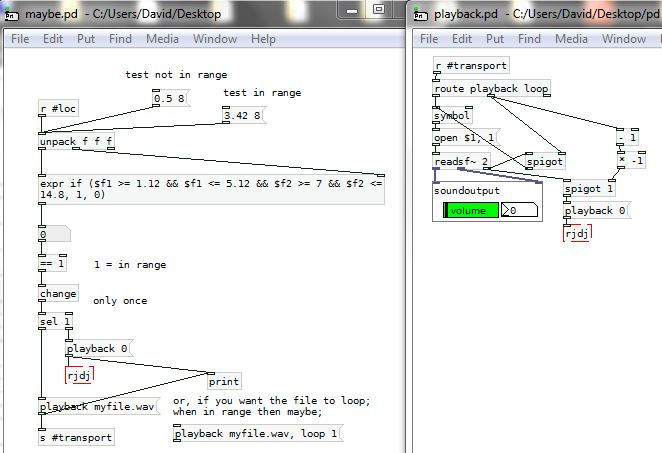
-
 whale-av
posted in technical issues • read more
whale-av
posted in technical issues • read more@Shabroy I was mistaken about the "underline".
It is used in patch names to differentiate them from sends and receives.
[r_#name] for the patch but [r #name for a receive.
You found that patch as [main] in PdParty_composerpack\PdParty_composerpack\tests\pdparty\Loc in.......> http://danomatika.com/code/pdparty/PdParty_composerpack.zipIt is probably the "Detailed Instructions" in https://danomatika.com/code/pdparty/guide that need to be followed...
As I understand it when the patches are uploaded to ios the patches and GUI's cannot be directly connected by cords.... all connections have to be made using sends and receives.
David. -
 whale-av
posted in technical issues • read more
whale-av
posted in technical issues • read more@Shabroy I don't have an ios device so I am flailing around in the dark.
But you should try [r_#loc-help] which has a spigot to open for data to flow (It seems that the format is definitely [r_#x] with no spaces).
And although these rj patches are useful for debugging it seems that the [rj_loc] object is required and is only created on an I-device.... presumably the same as the ios window screenshot (Loc ... see below) from the PdParty/Guide PDF.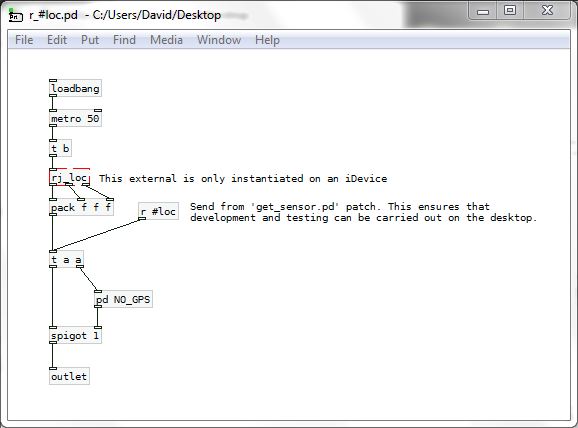
I might read this..... https://danomatika.com/code/pdparty/guide ... when I get time.
It seems to explain such things...
And I imagine that this.....
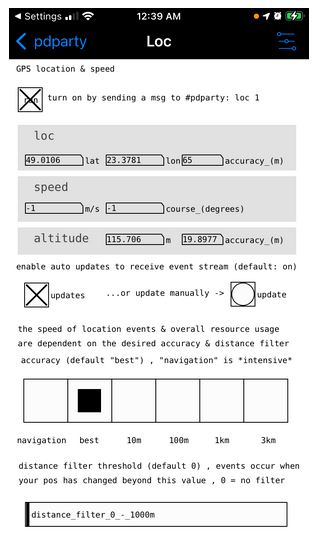
... exists somewhere in the PdParty download......... https://danomatika.com/code/pdparty
David. -
 whale-av
posted in technical issues • read more
whale-av
posted in technical issues • read more@impression You are running this on an RPI so have a look at this thread... https://scsynth.org/t/limit-to-maximum-number-of-osc-messages-that-can-be-received-in-short-time/8641/6
The sysctl command will probably help.
David. -
 whale-av
posted in technical issues • read more
whale-av
posted in technical issues • read more@c_c I think you will always have artefacts as the delay read point changes.
Even if you have 2 delays and swap (flip-flop) between them you will hear the change.
But if you crossfade between the 2 delays maybe your ears/brain will be deceived.
You will need to find a sweet spot for the length of the crossfade dependant on the range of the timing changes.
David. -
 whale-av
posted in technical issues • read more
whale-av
posted in technical issues • read more@Shabroy It seems that you have to enable GPS in PdParty........
Chapter 3.2.5 here........ https://danomatika.com/publications/pdparty_pdcon_16.pdf
.... and then receive the data through an [r #loc] object...... then [unpack f f f] for lon, lat, accuracy.You will find a lot of help on Github..... especially here...... https://github.com/rjdj/rjlib/blob/master/rj/r_%23loc-help.pd
It is old but should still be good.... and there are patches for generation too.
You should grab the whole rjlib here..... https://github.com/rjdj
David. -
 whale-av
posted in technical issues • read more
whale-av
posted in technical issues • read more@raynovich Sorry to be late replying.... I have been away..
I suppose that not so many people share their projects, and often those that do just list the necessary libraries (if we are lucky).
But it is good practice to use a folder structure to group your own abstractions.... which of course the other person will need to run the main patch.
Here is an example that is about as complex (but complete) of an old shared library for GEM.
It can be found here..... https://github.com/extendedview/extended_view_toolkit
This is the structure.....
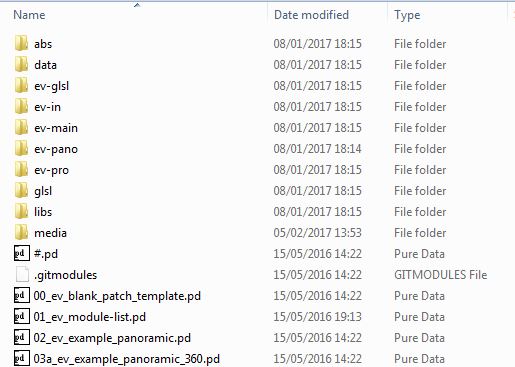
And this is how the paths were declared........

You can see how . and .. are used for paths in the help file for [declare]
But if you put all your abstractions in a folder "abs" then you only need a [declare -path abs] so that they are found in that sub-folder.
And you can of course add the libraries to your bundle and declare them as was done in the [init] sub-folder in extended-view.
They then used an abstraction..... [ev-main/ev_declare] in their patches (inside [pd init] ) to set the paths for all the examples in their project.
David. -
 whale-av
posted in technical issues • read more
whale-av
posted in technical issues • read more@raynovich You had the same problem 5 years ago....
https://forum.pdpatchrepo.info/topic/13399/paths-and-organizing-pd-files-for-use/1
Using the [declare] object for libraries and externals in your patches solves the problem both on your computer and for when you share a patch.
It sets up a search using the standard paths.... so adapts to the Pd paths for each computer and OS.
Also it shows the other person which libraries they are missing.
It is a little more work, but future proof....
David. -
 whale-av
posted in technical issues • read more
whale-av
posted in technical issues • read more@donnerbono You might also like this...... https://www.katjaas.nl/slicejockey/slicejockey.html
It needs extra libraries for Vanilla..
HCS
Zexy
nilwind -
 whale-av
posted in technical issues • read more
whale-av
posted in technical issues • read more@jameslo I would use [coords( rather than [donecanvasdialog( as it is less "dirty". [pdcontrol] I have never tried.
I can't remember whether you need to exit from edit mode after the [coords( message.
David. -
 whale-av
posted in this forum • read more
whale-av
posted in this forum • read more@jameslo Yes, I think so too......
It seems to have a tilt to archaeology... digging up blasts from the past.
I will have to put my "bad cop" hat on again.
David. -
 whale-av
posted in technical issues • read more
whale-av
posted in technical issues • read more@nicnut Yes, as the [phasor~] output jumps it could output samples that jump from near 0 to near 1 or vice versa and that will produce clicks.
You could window each grain, or as I did here soft duck the output during the jump.
The effect is the same I think.
Microsound-granular.pd
See [s smooth] and [r smooth] for the duck.
David.

